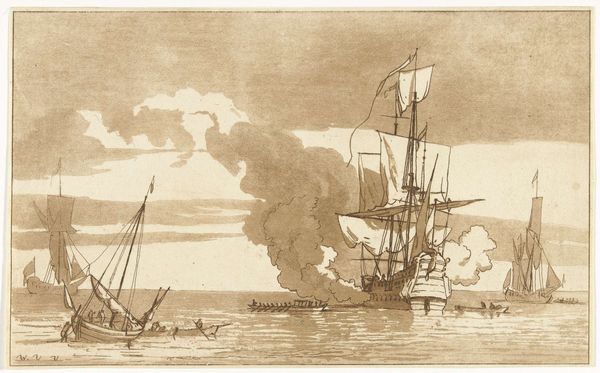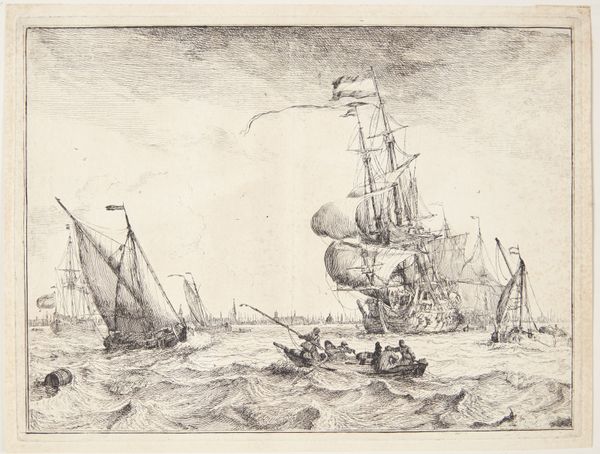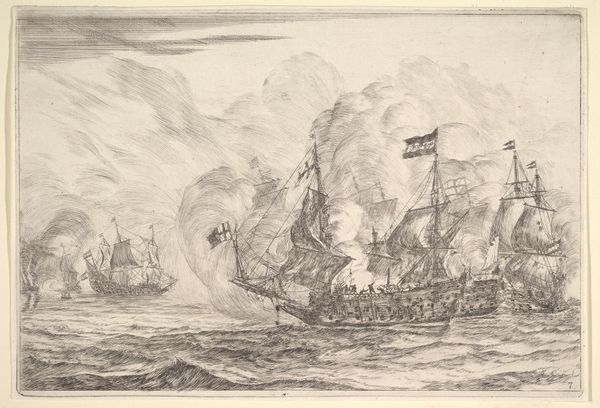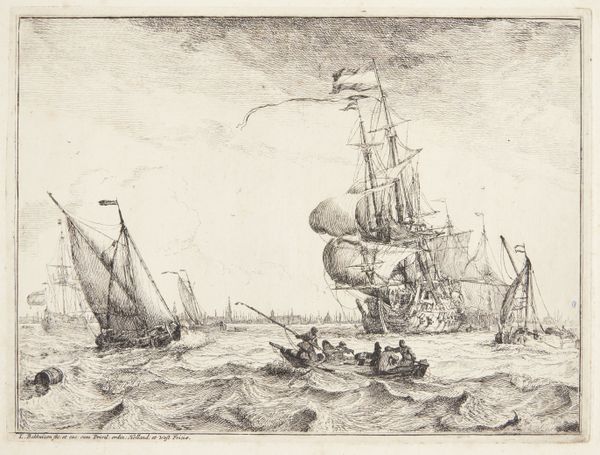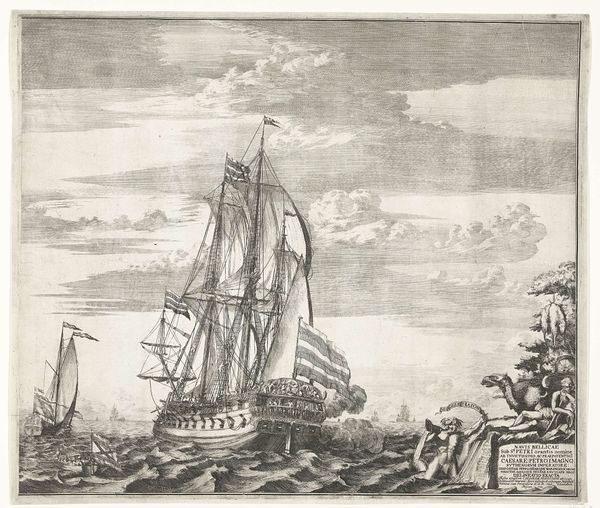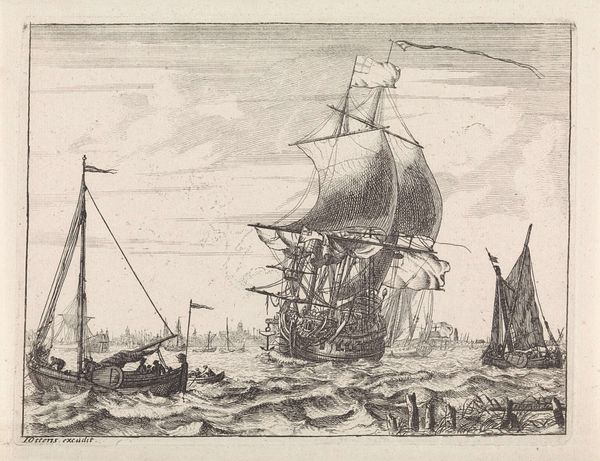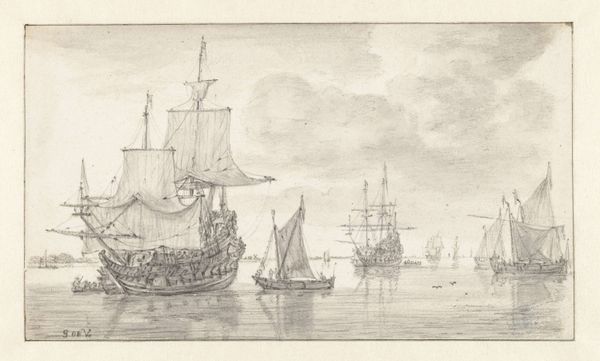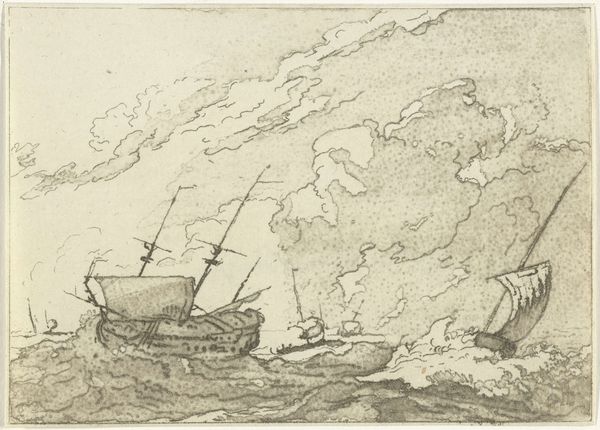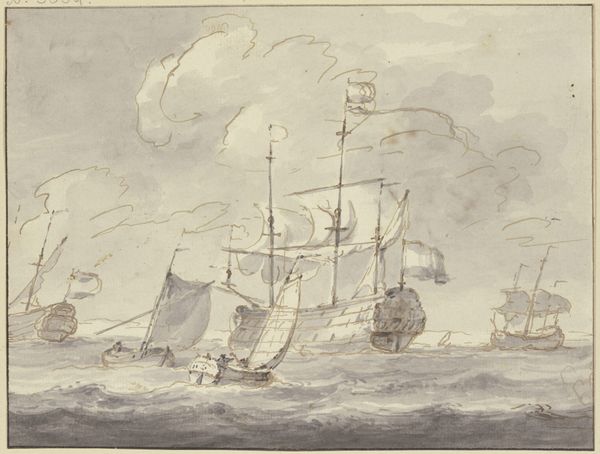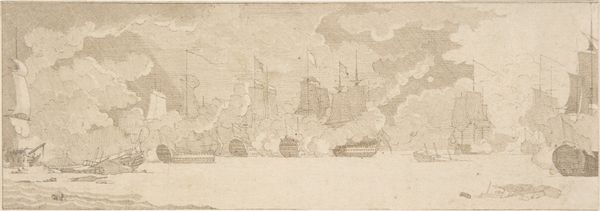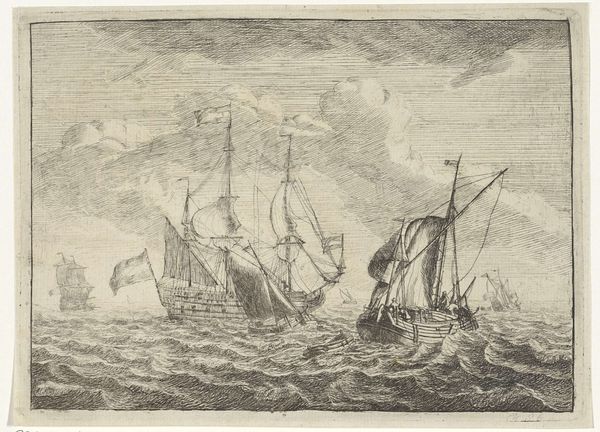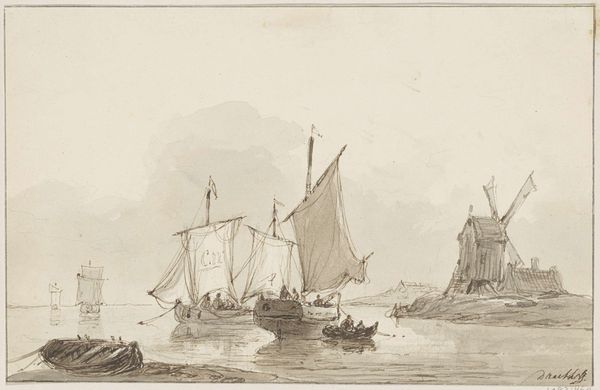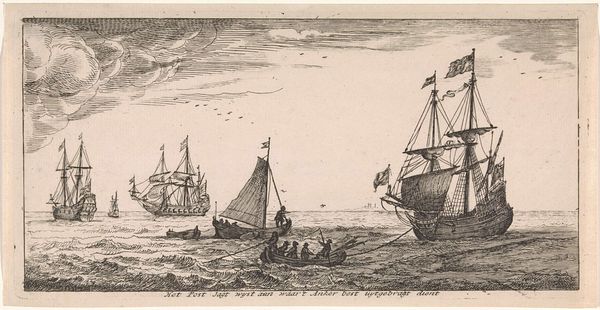
print, engraving
# print
#
landscape
#
history-painting
#
engraving
Dimensions: height 157 mm, width 258 mm
Copyright: Rijks Museum: Open Domain
Curator: Here we have "Zeeslag," a print made sometime between 1778 and 1832 and attributed to Anthonie van den Bos. Editor: The overall effect is…ominous. A muted palette of browns and grays lends a somber air to the scene, while the dramatic plume of smoke suggests something terrible has just happened. Curator: The artist really captures the immediacy of naval combat, doesn't he? The composition leads your eye across the water, from the smaller vessels to the larger warships engulfed in the heat of battle. Note how the density of the engraving increases around the ships to highlight their importance in the overall composition. Editor: Absolutely, but it's hard to ignore the wider context, too. Consider the Dutch Republic’s history, heavily shaped by maritime power and conflicts. Prints like these, circulated widely, helped solidify national identity but also, perhaps, romanticized imperialistic ventures. Whose stories are left out of this representation of warfare? Curator: An interesting point. Focusing on purely formal aspects, the lines that define the ships’ rigging are delicate yet strong, giving a sense of depth and volume to the vessels. Notice also how the landscape provides a neutral backdrop—placing formal emphasis back onto the activity within the scene itself. Editor: Precisely. This historical painting, printed for wide consumption, functioned as propaganda and helped reinforce notions of national heroism. The sleek engraving style almost belies the violence it depicts, subtly conditioning the viewer’s perception of war. It encourages you to accept and perhaps even glorify it, absent are any indicators that challenge such assumptions. Curator: Ultimately, I find this print a visually stimulating piece where we are reminded of art's ability to not just reproduce life, but also subtly distort our perception of it. Editor: Indeed, it serves as a potent reminder that images—even historical ones—are never neutral, that they can act as complex instruments of social commentary.
Comments
No comments
Be the first to comment and join the conversation on the ultimate creative platform.
